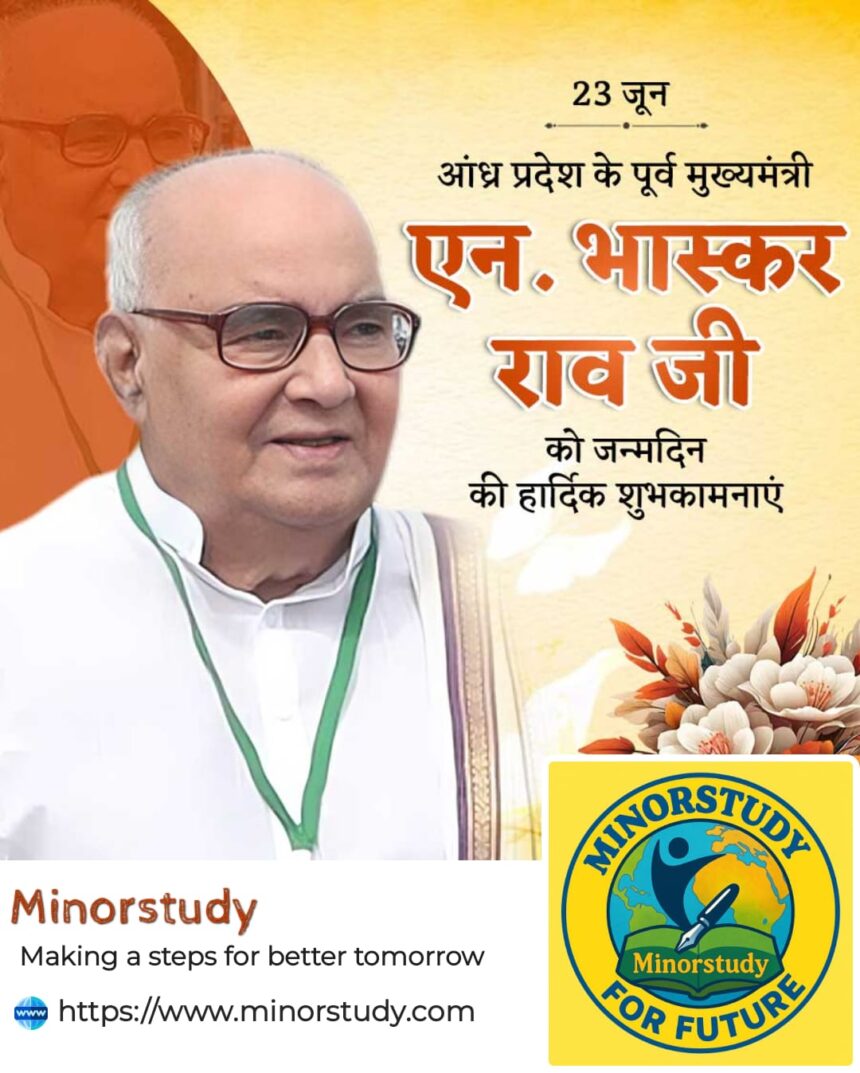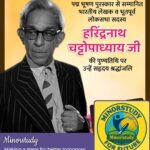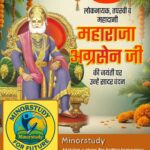🧑⚖️ Introduction: A Controversial yet Defining Figure in Andhra Pradesh Politics
Nadendla Bhaskara Rao: In the complex mosaic of Indian politics, some personalities stand out not just for what they did, but for how dramatically their actions influenced public life. One such towering and controversial political figure is Nadendla Bhaskara Rao Ji.
- 🧑⚖️ Introduction: A Controversial yet Defining Figure in Andhra Pradesh Politics
- 🗓️ Early Life and Background
- 🧠 Political Career and Rise to Power
- 💥 The 1984 Coup – A Political Earthquake
- 📊 Timeline of Key Events
- 🧾 Lesser-Known Facts About Nadendla Bhaskara Rao Ji
- 🔍 Significance in Indian Political History
- 🎉 Observance & Public Memory
- 💬 FAQs About Nadendla Bhaskara Rao
- ❓ Why is Nadendla Bhaskara Rao famous?
- ❓ Did he betray NTR?
- ❓ Was he ever elected after 1984?
- ❓ Is he still active in politics?
- ❓ What can we learn from his life?
- 🧘♂️ Life Lessons and Daily Life Impact
- 🏁 Conclusion: A Controversial Hero or Misunderstood Strategist?
Known for his shortest and most debated tenure as Chief Minister of Andhra Pradesh, Bhaskara Rao’s story is a political thriller marked with loyalty, betrayal, governance, and a deep insight into the power dynamics of democracy. While his name evokes both admiration and criticism, his role in Andhra Pradesh’s political landscape is undeniably significant.
This article dives deep into his history, life, controversies, legacy, significance, timeline, and impact on society.
🗓️ Early Life and Background
Full Name: Nadendla Bhaskara Rao
Born: June 23, 1936
Birthplace: Guntur district, Andhra Pradesh
Education: Bachelor’s Degree in Law (LLB)
Profession: Lawyer turned politician
Party Affiliations: Congress (originally), Telugu Desam Party (TDP), later shifted affiliations post-controversy
Nadendla Bhaskara Rao began his career as a lawyer, but his passion for public service quickly led him into politics. He was known for his sharp intellect, legal expertise, and organizational skills.
🧠 Political Career and Rise to Power
📈 Key Positions Held:
Member of Andhra Pradesh Legislative Assembly multiple times
Minister for Finance, Planning, and Power in the AP Cabinet
Chief Minister of Andhra Pradesh for just 31 days in 1984
Elected to Lok Sabha from Khammam constituency
Later served in various capacities under different political banners
📌 His Role in Telugu Desam Party (TDP)
Nadendla Bhaskara Rao played a crucial role in the formation and rise of TDP under N. T. Rama Rao (NTR) in the early 1980s. As a trusted lieutenant, he was part of the core team that helped TDP secure a historic victory in 1983, toppling Congress dominance in Andhra Pradesh.
He held key portfolios under NTR and was considered second in command in the party hierarchy.
💥 The 1984 Coup – A Political Earthquake
🔥 The Controversial Takeover
On August 15, 1984, while NTR was in the U.S. for heart treatment, Nadendla Bhaskara Rao staged a political coup. With the support of the then Governor Thakur Ram Lal and some MLAs, Bhaskara Rao was sworn in as Chief Minister of Andhra Pradesh.
This move was seen as a betrayal by many TDP supporters and created a political firestorm.
🧾 Key Highlights of the Coup:
The coup was executed without proving majority in the Assembly.
Massive public protests erupted in support of NTR.
Intellectuals, film stars, and citizens rallied behind democracy and mandate.
The Union Government under Indira Gandhi was seen as indirectly supporting the move.
After 31 days, Bhaskara Rao was forced to resign, and NTR was reinstated.
📊 Timeline of Key Events
| Year | Event |
|---|---|
| 1936 | Born in Guntur, Andhra Pradesh |
| 1970s | Rose through ranks in Congress |
| 1982 | Joins NTR in launching TDP |
| Jan 1983 | TDP wins elections, NTR becomes CM |
| Aug 1984 | Becomes CM during NTR’s absence |
| Sept 1984 | Resigns under pressure |
| 1989 | Elected to Lok Sabha |
| 1998 | Retired from active politics |
🧾 Lesser-Known Facts About Nadendla Bhaskara Rao Ji
He was one of the first finance ministers to advocate aggressive reforms in AP.
Bhaskara Rao was not from the film industry, unlike many of his TDP colleagues, yet held massive influence.
His law background made him sharp in legislative debates and policy decisions.
He publicly apologized years later for his 1984 actions, stating “It was political miscalculation, not betrayal.”
After 1984, he drifted politically and couldn’t return to the peak of political power.
🔍 Significance in Indian Political History
💡 Democratic Awakening
The 1984 incident involving Nadendla Bhaskara Rao triggered one of the earliest civil movements for the protection of democratic mandate in India. It is often seen as a people-powered correction of a political misstep.
🎥 Media and Public Mobilization
The events also saw how film stars, media, and public sentiment could dramatically reverse power plays. It set a precedent for citizen activism in politics.
📚 Political Science Case Study
His story is now studied in political science as a classic case of constitutional crisis, governor overreach, and popular mandate restoration.
🎉 Observance & Public Memory
While there’s no formal celebration or day dedicated to Nadendla Bhaskara Rao, his political episode is often recounted in books, interviews, political documentaries, and anniversaries of NTR’s return.
🙏 Sample Wishing Line:
“On this day, we reflect on the intriguing chapter of Nadendla Bhaskara Rao Ji’s life—a moment that redefined Andhra politics and reminded us of the strength of democratic will.”
💬 FAQs About Nadendla Bhaskara Rao
❓ Why is Nadendla Bhaskara Rao famous?
He is most known for his brief and controversial tenure as CM of Andhra Pradesh in 1984 and for being a senior leader in TDP and Congress.
❓ Did he betray NTR?
Public perception sees his actions as betrayal, though Bhaskara Rao later described it as a “political decision gone wrong.”
❓ Was he ever elected after 1984?
Yes, he won the Khammam Lok Sabha seat in 1989.
❓ Is he still active in politics?
No, he has retired from active politics and maintains a low public profile.
❓ What can we learn from his life?
That power acquired without legitimacy is unsustainable and that public mandate must be respected in a democracy.
🧘♂️ Life Lessons and Daily Life Impact
Bhaskara Rao’s story teaches us:
Ambition must be balanced with ethics.
True leadership respects loyalty and public trust.
Shortcuts to power often lead to long-term loss.
It shows how people, not just politicians, uphold democracy.
Even controversial figures can be introspective and reformist later in life.
🏁 Conclusion: A Controversial Hero or Misunderstood Strategist?
Nadendla Bhaskara Rao Ji’s political journey is not merely about ambition or betrayal. It is a mirror reflecting the tensions between loyalty and ambition, legality and morality, and power and principle.
He may be remembered for the 31-day tenure that changed Andhra’s political landscape, but he also symbolizes how democratic systems, even when shaken, restore themselves through people’s will.
His life invites discussion—not just judgment—and offers powerful lessons on governance, responsibility, and integrity.








